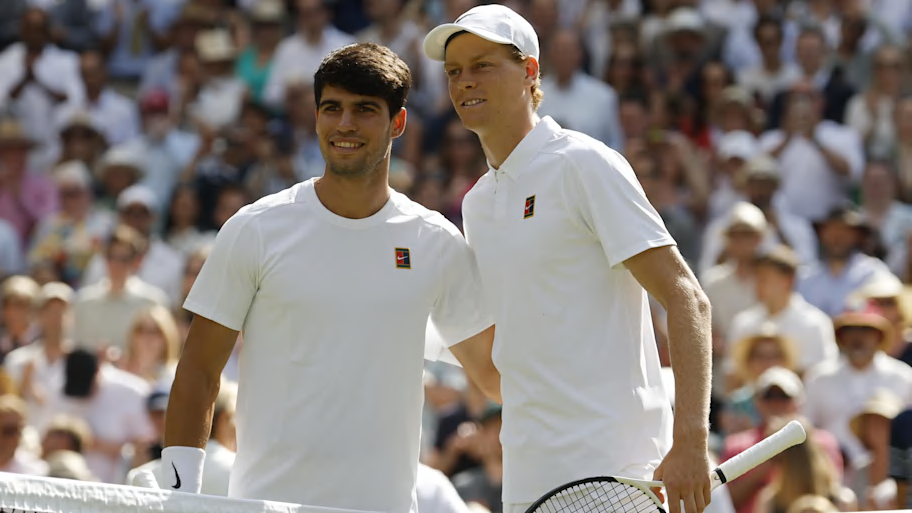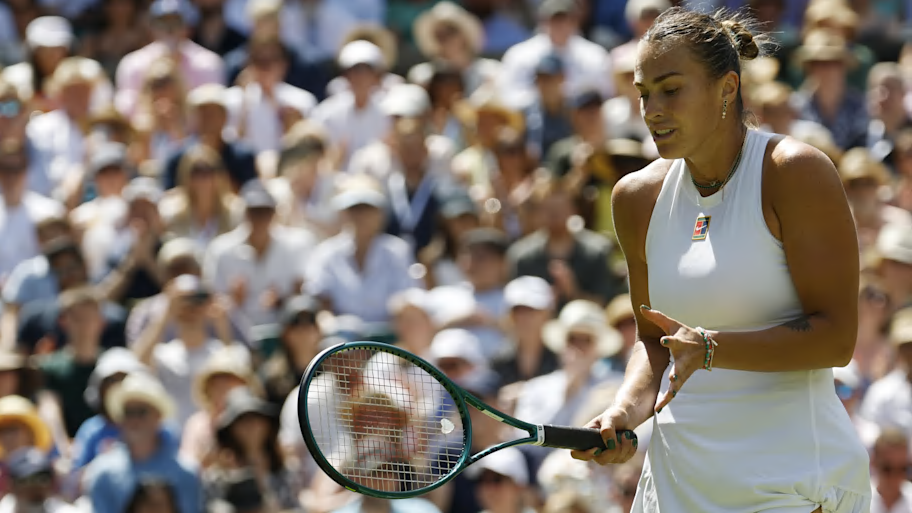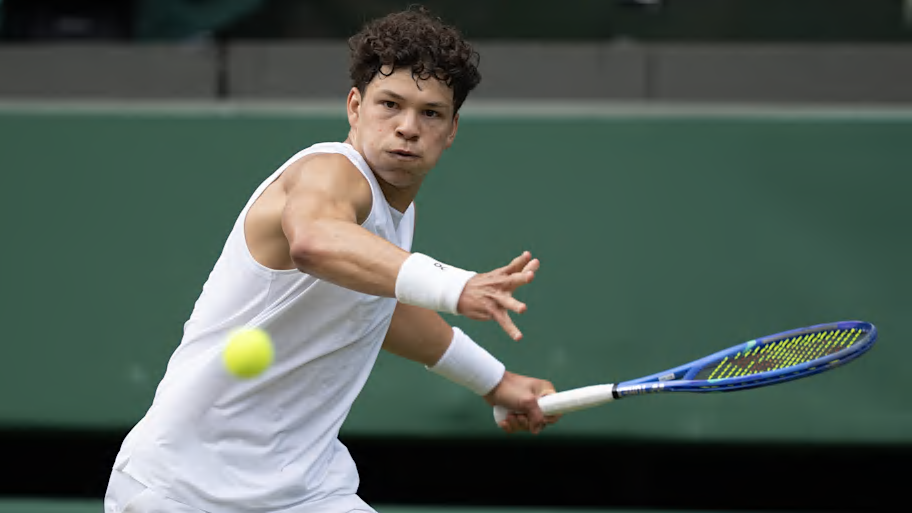
Hey, everyone …
• Here’s this week’s Served podcast:
• Wimbledon’s expansion is increasingly looking like a when, not an if.
• Qinwen Zheng has withdrawn from the U.S. Open, and Léolia Jeanjean has been selected to join the main draw.
Onward …
The large spate of Canada withdrawals is not surprising and is a trend that’s here to stay given the updated tennis calendar. A decade ago, there was about a month gap between the Wimbledon final and the start of the Canada event. Now, because of the extra week between RG and Wimbledon and the early start for Canada and Cincinnati to accommodate their transition to a two week event, the gap is just two weeks. I expect Canada to continue to suffer more withdrawals in future years given how much better Cincinnati is situated on the tennis calendar.
Rohit, Washington D.C.
• We were joking about the press release stating that Carlos Alcaraz “was forced to” withdraw. No, he wasn’t forced. He has agency and is not a passive vessel. The untenable format and length of the tournament brought about his—and others’—choice to withdraw.
Here’s how I described it with Andy Roddick: There are some inviolable laws and forces. Gravity. Time. The financial markets. They are immune to spin, empty promises and flashy press releases. Here’s another: tennis players’ work rates. Athletes are not robots. They cannot or will not play a 12-day event—often across an ocean; usually in blistering heat and humidity—two weeks after the last big event ended, days before the next 12-day event commences. Something has to give here, folks.
Outside of the tournaments—now plump with the extra sessions and media rights—no one likes or feels fondly about these events that have expanded and trespassed like some board-approved kudzu.
You can use words like “innovation” to describe this ridiculous new format. You can use inducements like bonuses and swag bags. You can use threats like fines. It’s not going to matter. Some players will be injured. Some will exaggerate injury. Others might simply say, No injury, per se. I’m fatigued. The effect is the same. You’re going to have more withdrawals than a casino floor ATM.
When will tournaments—and by extension, half the ATP board—realize that we are not making widgets here. Expanding capacity and productivity and work units might look good on a McKinsey deck. But it isn’t going to work here? We are talking about labor/talent. Energy—in this case, human competitive energy—is a finite resource. And when you expand events so unnecessarily, you are going to have to confront this. The rubber is meeting the road. Or, more accurately, the rubber is staying off the road.
Part of me feels for Canada. You run a longstanding event and put up this money, and you expect more stars to show up. The other part of me says, “What did you think was going to happen?”
Hi Jon, LOVE your column, and in the spirit of gratitude, an unforced error correction: “What a great statistic. No player has ever been a losing finalist three times in a season.”
It’s a great statistic, maybe, just an inaccurate one. Venus Williams lost in the finals to Serena for the last three of 2002 (and, for good measure, two of the first three in 2003), though given the competition there was no shame in being second best repeatedly.
Peace, Noah Baerman, Middletown, CT
• Not just an unforced error, but a total shank on my part. Noah was merely the first of many who, rightly, corrected the record. And there are more. In 2006, Justine Henin lost three of four major finals (and won the fourth, the French.) In 1984, Chris Evert won the Australian Open … and then lost three finals (to Martina Navratilova). ++ In 1995, Arantxa Sánchez Vicario lost three major finals.
I suppose the point stands. Aryna Sabalenka has had a strange year. It’s hard to argue she isn’t the force atop the WTA rankings. It’s true empirically, and it’s true in terms of aura. Yet, she is trying to salvage her season at the U.S. Open, having gone 0–3 at the majors in 2025. But again, my error. I own it. I should have caught it. Blame me, not the reader.

++ We often talk about how majors are the four-sided coins of tennis’s realm. And how, if players from the past knew how much “legacy weight” majors would carry, they never would have missed them voluntarily. Enter Evert Down Under. She played the Australian Open six times, fewer than half the times she entered the other three majors. She reached the final every time, winning twice, going 30–4 for her career.
Jon I noticed you didn’t address Sally Jenkins’s blistering column on the McEnroe brothers. She even made an Instagram post afterwards just to bury them again. Do you have thoughts on this?
BW, Brooklyn.
• I alluded to this piece in the parting thoughts column from Wimbledon, but I’ll bite (and link the column here). You set me up for the full disclosure, so bear in mind: I know Sally, I like Sally, I worked with her back in the day at Sports Illustrated and am working on a project based on an excellent piece she wrote. Likewise, I know John, I like John and I did some work with John recently, both at Wimbledon and Paris.
John is John. He’s entertaining. He’s funny. He has an aura. He has the lived experience of winning majors—though that was now 40 years ago. For many, he touches a nostalgic nerve. I understand why fans, casual ones in particular, like him and his commentary.
I also understand the complaints. If there were a standardized test on Tennis in 2025, would John be my first choice of tutor? Maybe not. Would anyone complain if he were a little more informed about today’s players? No.
Then again, over on TNT, the good folks there have made an entire segment poking fun at the gaps in Charles Barkley’s knowledge of the contemporary NBA. No one minds that. The implication: This guy from 40 years ago is here to entertain, not necessarily inform, about the contemporary NBA. (Anticipating the pushback: Yes, Barkley is in the studio, not calling games.)
My take? McEnroe might be out there mispronouncing Flavio Cobolli’s name, but he’s out there. He cares about tennis. He’s loyal to tennis. He runs an academy that, by any definition, does a lot of good. He crosses oceans and shows up. His observations—true, based on gut and not data or studied research—can be quite trenchant and funny.
Who among us doesn’t like a stylishly-written acidic column? But maybe there should be one about some of McEnroe’s rivals and playing-day peers, who seem to denigrate tennis at every opportunity. Who only shows up to support tennis—the sport that made them wealthy and famous and fed their competitive instincts and took them all over the world—when they are being paid.
Hi Jon, I thought it was interesting that both the men’s and women’s Wimbledon champions were players with recent doping suspensions. I found it even more interesting that this topic rarely came up during the coverage (or at least while I was watching, and I watched more than usual this year). Were the broadcasters asked to keep away from this topic or was it really that much of a non-issue? Personally, I lost a lot of respect for Iga [Świątek] and Jannik [Sinner]. Not because I believe they intentionally used banned substances, but because of the lack of transparency, their perceived preferential treatment, and the minimal consequences. At a minimum, I believe they both should have been banned from one major as part of their punishment. The timing of their suspensions is so suspect (and so convenient). You talk about Bill Ackman and the optics for the Hall of Fame match, but the optics for Iga and Jannik are even worse as they are professionals who played the system and won. Guess it pays to be high ranking, have boatloads of money to hire the best lawyers, and have the situation wrapped up with lightning speed. As always, appreciate your columns, coverage, and insights. I really would like to know what the consensus was at Wimbledon among players and broadcasters.
Kris Loudon, TN
• I’m happy to go there.
A) Ultimately, this is akin to Alexander Zverev and the domestic abuse allegations. What do I mean? You—as a fan, media member, colleague, etc.—have to make your own determination re: how much (if at all) it impacts your perception and how often you want to be reminded of this cloud. Some people think the allegations against him should never be mentioned. Others want them alluded to every time he tosses the ball to serve. Most people are in the middle. You, as a fan, have agency there.
B) Convenient as it is—especially as they were both 2025 Wimbledon singles champions—let’s not conflate Świątek and Sinner. Her case (read it here) is relatively open-and-shut. She was jetlagged. She took melatonin that was contaminated. She was able to source the product. The tribunal believed her. The suspension was—rightly in my view—minor and there was no real taint.
C) Sinner’s case was—and is—decidedly more complicated, and, of course, triggered a rare appeal. There are facts in his favor. (The trace amount of the banned substance. The substance in question. The fact that the tribunal found credible Sinner’s assertion that he specifically asked his trainer if he had used anything to treat the injury, and the trainer said “No.”)
There are “bad facts” as well. (Chiefly: Why on earth would any physio or trainer—whose duties include making sure the athlete does not come into contact with potentially problematic substances—use a product with a specific doping warning on the packaging?)
D) Let’s lop off the extremists convinced this was either a “witch hunt” or Sinner should be banned from tennis in perpetuity. You could make a case that, messy as it was, the system ultimately worked. Under strict liability, Sinner couldn’t avoid a penalty. Given the circumstances and findings of no-fault or negligence on his part, two years seemed unduly harsh.
E) Sinner’s dates of return were “convenient.” True. He missed no majors and came back in time for the biggest tournament in his home nation. But remember, this was essentially a plea deal offered to him. In jurisprudence—at least U.S. jurisprudence—this happens all the time. Serve 90 days and you’ll be released in time for your daughter’s wedding. The offer had to be sufficiently enticing for him to agree.
F) I put a fair amount of stock in the players’ reaction. Yes, Nick Kyrgios is still doubling down on his Sinner taunts. Yes, Stan Wawrinka—who shared an agent with Sinner for many years—tweeted this. But if there were a perception that Sinner acted nefariously, wouldn’t the top players—i.e., those most directly impacted by any cheating—be, at least, giving him the side-eye? Instead, players like Jack Draper and Casper Ruud, unsolicited, speak out in favor of Sinner. Alcaraz considers him a friend. Comb through the Wimbledon transcripts and, over two-plus weeks, not one player made an adverse remark about the eventual champion. Not dispositive. But shouldn’t this tell us something?
G) Should Sinner’s 90-day suspension have come up more frequently and pointedly in the Wimbledon coverage? Perhaps. There were references to “challenges” and “adversity,” but maybe the discussion needed to be more on the nose. Maybe the casual fan could have been reminded more about the events of the past year. The flip side: He served his penalty and returned to playing at a dizzyingly high level. Isn’t that the story?
H) Again, there’s no satisfying answer here. There is, instead, a continuum. Both champions of Wimbledon ran afoul of doping protocol in the past year. Columns like this are fair game. Your feelings of disappointment or ickiness are valid. So are more charitable reads and takes. Some think justice was served. Others think justice overreached. Especially now that we have moved beyond the sentencing phase, it’s essentially up to you to make your own decision as to the size and intensity and (ir)removability of the stain.
Few humble observations from Wimbledon …
1. Djokovic was one healthy [Grigor] Dimitrov pec muscle away from playing in the Wimbledon final! (We all know he’s playing well enough to beat anyone other than Sinner.)
2. Ben Shelton needs a serve coach ... as absurd as it sounds, the guy gets very predictable for top 10ers and goes for too much. Please ask his dad to contact Gilles Muller. He desperately needs a slice serve and that means rotating his shoulder through and not just violently snapping his arm to slam dunk the ball …

3. I get the hype of Sincaraz, but this summer was Sinner’s coming out party … he’ll leave Alcaraz behind. Scary thing is he has not even peaked yet. By AO 2026, he'll likely mentally and technically peak and take off. Hats off to Carlos for pushing him there.
VK Houston.
1. I guess—assuming that you mean Djokovic would have beaten Dimitrov and Shelton and then lost to Alcaraz? Can we all agree Sinner got a get-out-of-jail-free card–and made the most of it?
2. The Shelton coaching arrangement is interesting, and also a bit of an outlier. Tennis tends to look skeptically—with justification and data points in support—at parents coaching kids. But there should be a separate category for “parents who coach their kids, but also played at the highest level.” Let’s not conflate Shelton with some other parent coaches who smoke and drink and look like they are only a 50-50 bet to tell you what end of the racket contains the grip.
3. Alcaraz had won their previous four matches. I’d caution against Sinner “leaving Alcaraz behind,” but this did appear to be a breakthrough. Sinner had ruled the asphalt and Alcaraz had ruled the clay and grass. Sinner’s Wimbledon title almost felt like an incursion.
Hi Jon,
Just in case many of your readers missed what happened during the first set of Sabalenka vs. [Amanda] Anisimova.
- Sabalenka serving, down 2–4.
- There is activity in the stands, apparently a fan is suffering from heat.
- Sabalenka goes to her cooler, takes out an ice pack and water bottle, walks over to the stands and has spectators pass those items up to the fan in distress.
Regards,
Joe, Branford CT
• Here is the video for those who missed it….
Two semi-conflicting thoughts here.
A) A pet peeve: conflating acts of mere decency with heroism simply because a celebrity is involved. Rafael Nadal is the kind of guy who stops and helps an elderly woman with a walker cross a busy street … Roger Federer is the kind of guy who chitchats with the barber rather than talk on his phone while getting a haircut … Djokovic is the kind of guy who doesn’t slam the door in people’s faces.
Sabalenka is great and this was a compassionate gesture, but let’s not confer too much saintliness on her for bringing an ice pack to a fan in distress. It would also be weird if she didn’t. Even down a break.
B) On the other hand, fans are free to like and dislike whom they choose. That’s part of the sport compact. But sometimes I wish they would defer a bit more to the people who see the athletes up close, catch the unscripted moments and watch them interact with others. In tennis, I’m not just talking about the media. It’s the staff, the tour personnel and the other players. I struggle to think of too many players more highly regarded than Sabalenka. Generous with her time and spirit. Unscripted. Uninhibited. She takes big swings, literally and figuratively. When she misses, she acknowledges errors and makes amends. Again, no fan has to like any player. But I can tell you that Sabalenka is very much liked inside the tent.
Shots, Miscellany
• A horrific tennis story from ESPN.
More Tennis on Sports Illustrated
This article was originally published on www.si.com as Tennis Mailbag: Making Sense of Canada Open’s Withdrawals.







